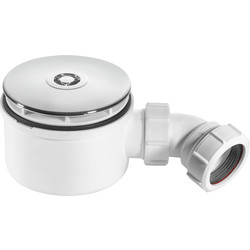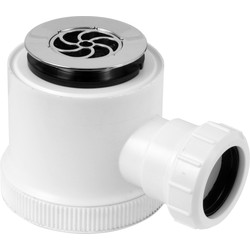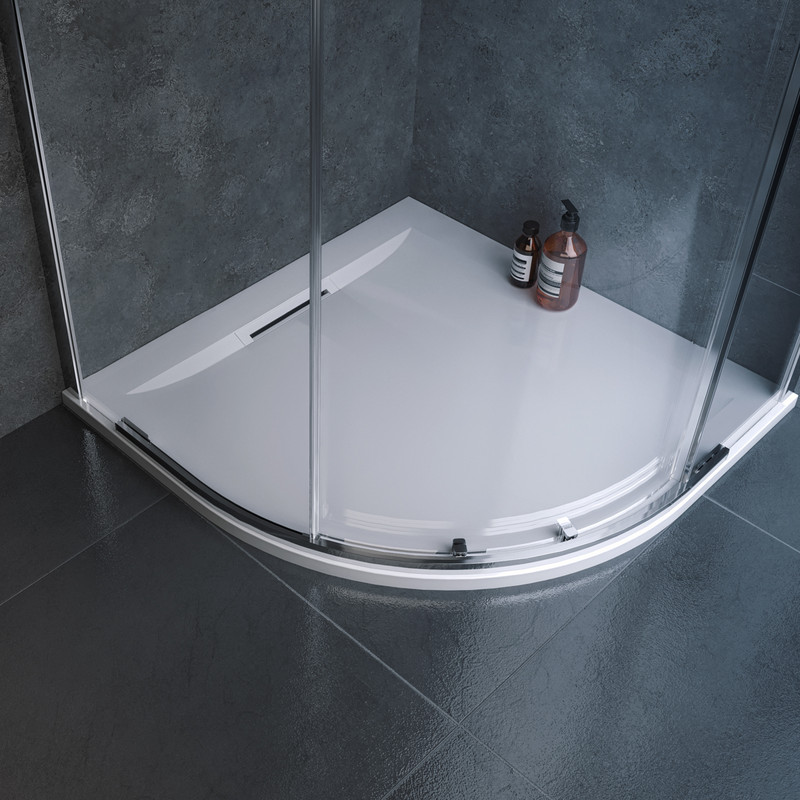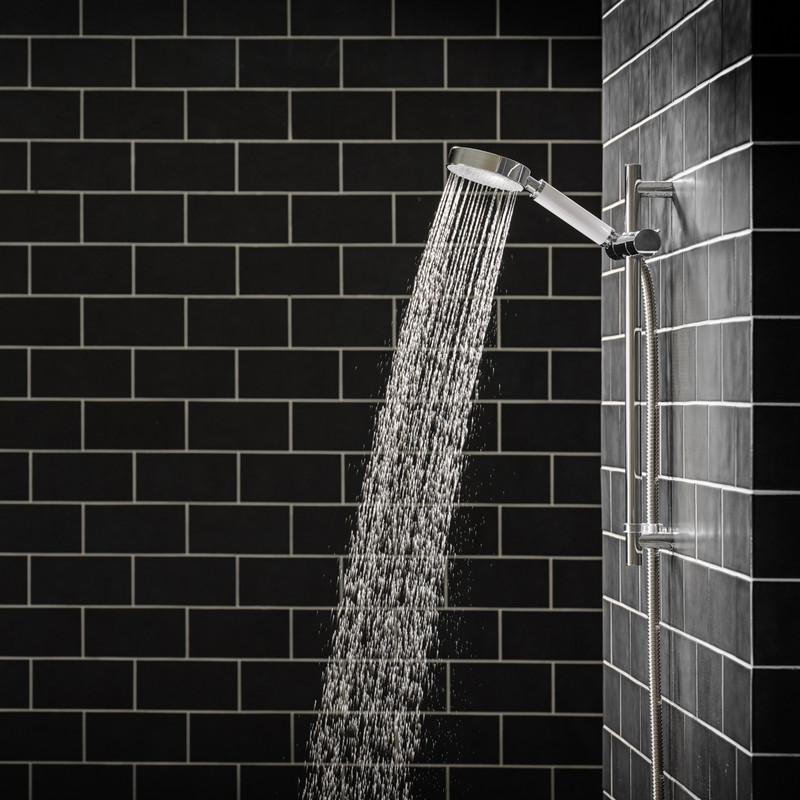A shower trap is a crucial component of a shower's drainage system. It is located beneath the shower tray and is designed to support the efficient flow of water. A shower trap, like a kitchen or toilet trap, keeps a small amount of water in to trap gases that can rise back through the pipes.
The main use of a shower trap is to connect the shower to the waste pipes. This system ensures that waste water from the shower head can drain out into external sewage systems. Without a shower trap, water would pool in the tray and could lead to bad smells rising up from the drain.
When choosing a shower trap, you’ll want to consider a few key factors to ensure effective drainage, and prevent issues such as water pooling, leaks, and damage in and around the shower area.
Types of Shower Traps
The main consideration when choosing a shower trap is simply the size of trap that will fit with your shower tray. All shower trays will fit either a 90mm or a 50mm shower trap.

90mm Shower Trap
90mm shower traps fit trays with a 90mm waste hole. Generally, 90mm shower traps can deal with a high flow rate so are ideal if you have multiple shower outlets or a powerful shower with a high flow rate. You’ll find most 90mm shower traps can be used in showers with a flow rate between 20 and 50 litres per minute, which is very high.

50mm Shower Trap
50mm shower traps fit shower trays with a 50mm waste hole. Despite 90mm shower traps having more space to let water flow through, modern 50mm shower traps can also withstand very high flow rates up to 50 litres per minute.

Bath Trap
Bath traps are used for baths and bath shower systems. They have a bend in the waste pipe which resembles a basin and kitchen sink waste pipe, where water sits to prevent gases and bad smells coming up through the pipe.
Key Shower Trap Considerations
Material
Shower traps are available in various materials, including plastic, stainless steel, and brass. The choice of material greatly influences the trap's durability and longevity.
Stainless steel and brass traps are known for their corrosion resistance and long-lasting performance, making them ideal for bathrooms that are frequently exposed to moisture.
Cover Plate
You’ll find shower traps with cover plates that are usually white or chrome. Chrome complements common bathroom features such as taps and shower heads, while white cover plates blend in seamlessly with white shower trays.
A trap with a removable cover or access point allows you to clear any debris or blockages, helping to maintain water flow and reducing the chance of issues down the line.
Water Seal
The water seal traps some water in the shower waste which stops smells coming up through the drain pipes. According to building regulations, the minimum depth of a water seal in a shower trap is 50mm.
However, you’ll find some shower traps have a 19mm water seal which are designed to replace traps where older, shallow traps were installed before the regulations were updated.
Flow Rate
If you have a powerful shower with a high flow rate, or multiple outlets then you’ll want to ensure your shower trap can keep up with the demand of many litres of water going down the drain per minute. Measure the flow rate of your shower by holding a jug under it for ten seconds, then multiply the amount of water by six to get the litres per minute – this is your flow rate.
Our shower traps have flow rates between 20 to 50 litres per minute.
Horizontal or Vertical
Many shower traps are horizontal, as this usually fits better with existing plumbing pipes. However, sometimes there may be obstacles such as wooden flooring in the way which may mean it’s necessary to choose a vertical shower waste instead.


